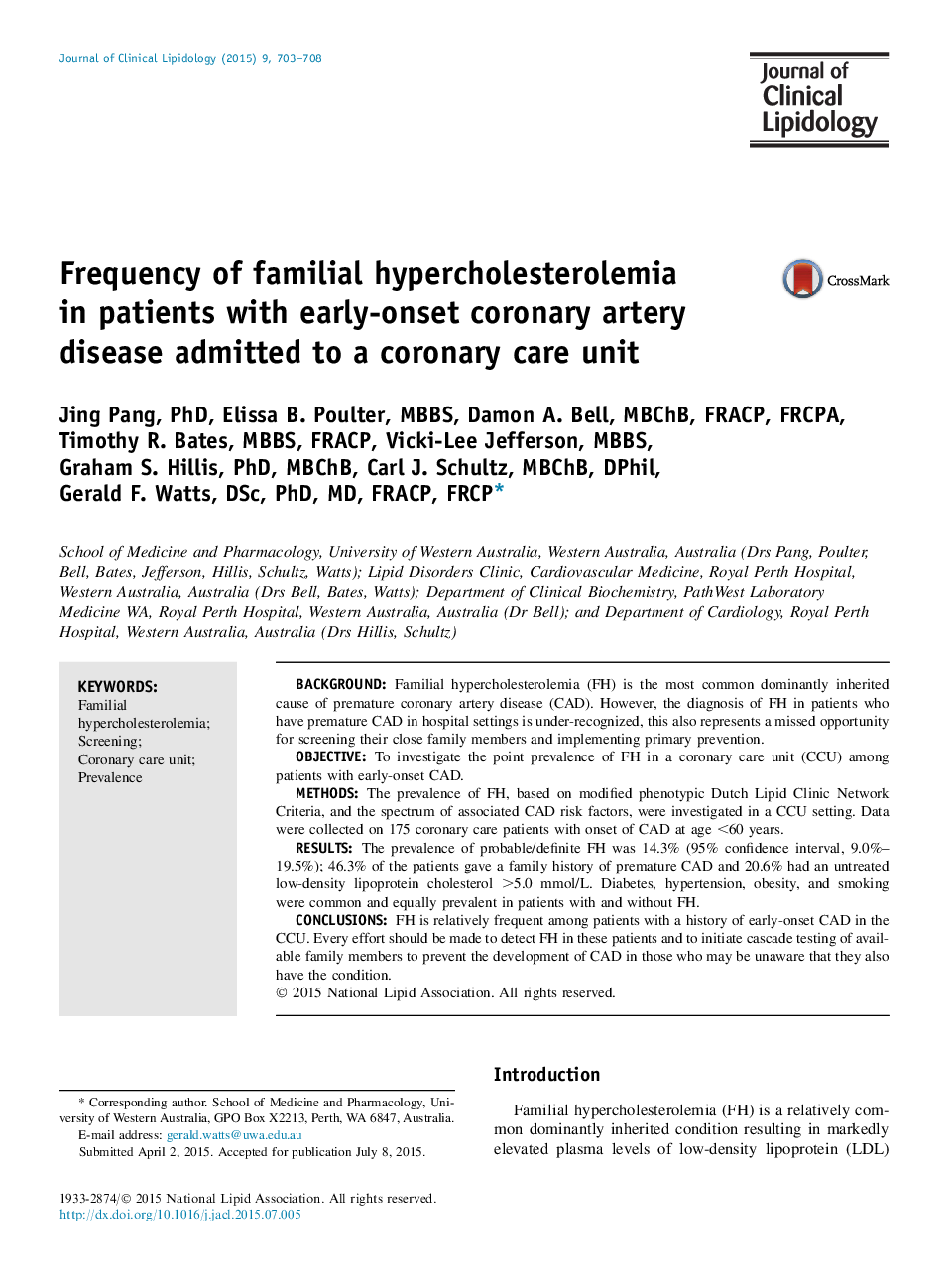| Article ID | Journal | Published Year | Pages | File Type |
|---|---|---|---|---|
| 2965879 | Journal of Clinical Lipidology | 2015 | 6 Pages |
•Familial hypercholesterolemia (FH) is not frequently screened for in tertiary hospitals.•FH is common among patients with early-onset coronary artery disease.•Simple clinic criteria can be used to screen for FH in coronary care units.
BackgroundFamilial hypercholesterolemia (FH) is the most common dominantly inherited cause of premature coronary artery disease (CAD). However, the diagnosis of FH in patients who have premature CAD in hospital settings is under-recognized, this also represents a missed opportunity for screening their close family members and implementing primary prevention.ObjectiveTo investigate the point prevalence of FH in a coronary care unit (CCU) among patients with early-onset CAD.MethodsThe prevalence of FH, based on modified phenotypic Dutch Lipid Clinic Network Criteria, and the spectrum of associated CAD risk factors, were investigated in a CCU setting. Data were collected on 175 coronary care patients with onset of CAD at age <60 years.ResultsThe prevalence of probable/definite FH was 14.3% (95% confidence interval, 9.0%–19.5%); 46.3% of the patients gave a family history of premature CAD and 20.6% had an untreated low-density lipoprotein cholesterol >5.0 mmol/L. Diabetes, hypertension, obesity, and smoking were common and equally prevalent in patients with and without FH.ConclusionsFH is relatively frequent among patients with a history of early-onset CAD in the CCU. Every effort should be made to detect FH in these patients and to initiate cascade testing of available family members to prevent the development of CAD in those who may be unaware that they also have the condition.
